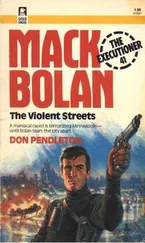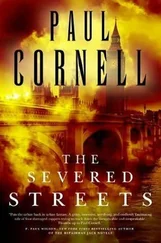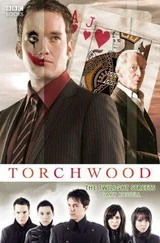Given the youth of their witness and the intimidating confines of the state’s attorney’s office, the investigators found it surprising that they had to press the young girl to reveal the names of her friends. When she finally began talking, McLarney and the others were provided with only given or street names-Lulu, Renee, Tiffany and Munchkin-all of whom supposedly lived in the Murphy Homes high-rises. McLarney, Belt and Tuggle went to the projects, finding a variety of young girls who answered to the names provided, but none knew about the shooting. Nor, for that matter, did they seem to know anything about the thirteen-year-old witness.
Once again, McLarney also sent the detail in search of the black Ford Escort that Clifton Frazier had supposedly used to drive Owens away from the shooting scene. But no such car could be in any way connected to either Frazier or Owens, although the men spent several days watching and following several black Escorts they found near the shooting scene.
The effort to confirm the statements of their two witnesses was going nowhere. Moreover, the defense attorneys appeared to be lining up a series of alibi witnesses who were ready to testify that Anthony Owens wasn’t even on Appleton Street when the shooting occurred. Something was clearly wrong and McLarney, sensing a dead end, went back to square one. Three days ago, he pulled out the case file and began reviewing the initial statements provided by neighborhood residents who had been standing in the crowd at the shooting scene and who were grabbed by uniforms and sent downtown. There were several such witnesses, all of whom had claimed that they knew nothing and had merely joined the spectators after the shooting. With nothing left to lose, McLarney decided it wouldn’t hurt to begin poking through those statements a second time, so the detail began interviewing each of the witnesses again. After another day on the street, they finally came upon a twenty-year-old resident of Mosher Street named John Moore.
On the night of the shooting, Moore had been yanked off a corner by uniforms and sent downtown, where he told detectives that he had heard the shots but seen nothing. This time, after several hours of friction in the large interrogation room, however, the story changed.
In fact, Moore didn’t see the shooting, but he saw everything leading up to it. He was out on his stoop on the night of October 22, watching Clifton “Butchie” Frazier and a young girl he didn’t know walking west on Mosher toward Appleton. Frazier and the girl were halfway down the block when a marked police car began rolling slowly down the street. Moore saw the radio car come abreast of the couple, then roll around the corner onto Appleton. A few seconds later, Frazier and the girl rounded the corner as well.
Then came the gunshots. Three of them.
Asked whether there had been a crowd at the corner of Mosher and Appleton, Moore said that the corner was empty at the time of the shooting. He further confirmed his story by leading detectives to a nineteen-year-old friend who had been with him on the stoop.
The second witness recounted the same sequence of events as Moore, adding two more facts to the record. First, the friend remembered that when the radio car came abreast of the couple on Mosher Street, the officer behind the wheel and Butchie Frazier had eyed each other for a moment or two. Second, and more important, the girl with Frazier was named Yolanda. She lived around the corner on Monroe Street. And yeah, if he had to, he could point out the house.
Earlier this morning, McLarney and the two detail officers gathered in the vestibule of that West Baltimore rowhouse, waiting for Yolanda Marks to gather her things and walk to the waiting Cavalier. She was a sad-faced thing, seventeen years old, with deep brown eyes that began to tear as soon as they took her downtown and closed the door to the interrogation room. Yolanda was a juvenile, of course, so her mother came to the office as well, and that proved fortunate. Because after every moral appeal and veiled threat fell short of the mark, it was the mother who went into the room and told her teenage daughter to get it over with, to do the right thing.
Yolanda wiped her eyes, then cried some more, then daubed her eyes again. Then, for the first time, McLarney learned the truth about the attempted murder of Officer Eugene Cassidy.
“Butchie shot the police.”
According to the girl, the whole thing happened in less than a minute. Cassidy was already out of the radio car and waiting for the couple when they turned the corner onto Appleton.
“Hey, I want to talk to you.”
“What for?”
“Put your hands against the wall.”
Butchie Frazier began to assume the position, then suddenly pulled a handgun from his right jacket pocket. A southpaw, Cassidy grabbed Frazier’s weapon with his left hand; as a result, he was unable to pull his own revolver from the holster on his left hip. With Cassidy still grappling for the gun, Frazier compressed the trigger. The first shot went wide. Seconds later, the gun was flush against the left side of Cassidy’s face and Frazier fired two more rounds.
Cassidy fell to the sidewalk a few feet from his radio car as Frazier fled with the gun through a back alley. Yolanda screamed, backed into the street, then wandered around the block to her house on Monroe Street, where she told her mother what had happened. At that point, neither mother nor child entertained thoughts about calling the police. Nor, for that matter, did John Moore, who had claimed no knowledge of the event on the night of the shooting. Moore’s friend also refused to volunteer himself as a witness until detectives confronted him. And yet another couple, who had been walking on Appleton Street and witnessed the struggle between Frazier and the officer, failed to come forward and were only located after Moore and his companion began naming others who were on the street at the time of the shooting.
West Baltimore. You sit on your stoop, you drink Colt 45 from a brown paper bag and you watch the radio car roll slowly around the corner. You see the gunman, you hear the shots, you gather on the far corner to watch the paramedics load what remains of a police officer into the rear of an ambulance. Then you go back to your rowhouse, open another can, and settle in front of the television to watch the replay on the eleven o’clock news. Then you go back to the stoop.
McLarney knows the Western, knows the code. But even after all those years on the street, it still seems incredible that a cop can be shot twice in the head and get no response from an entire neighborhood. And so, when Yolanda Marks finally begins to break, McLarney stops beating up on paper clips and returns to the interrogation room like a true innocent, speaking to her about human tragedy, about lives that can never be made whole. Then he leaves, knowing that nothing he said will stop those tears.
Later that night, when McLarney calls Cassidy at home to tell him the story of Appleton Street, Cassidy suddenly realizes that he knew the man who tried to kill him. Clifton Frazier was the neighborhood badass on Cassidy’s post, an arrogant dope peddler who had only a week earlier beaten an elderly man senseless. The old man lost the use of an eye in that attack, a beating inflicted because the victim had seen Frazier slapping a young woman on the street and had the temerity to tell the younger man to let the girl alone. Cassidy knew about the beating because he had been trying for days to find and arrest Frazier on the outstanding warrant.
To Cassidy, Appleton Street now made sense; more than that, it meant something. In the end, he had not been shot down because he wandered onto a crowded drug corner like some brainless academy product. He had been shot doing his job, trying-as he had tried with a fifteen-year-old in a hospital recovery room-to arrest a wanted man. He could live with that. He would have to.
Читать дальше












